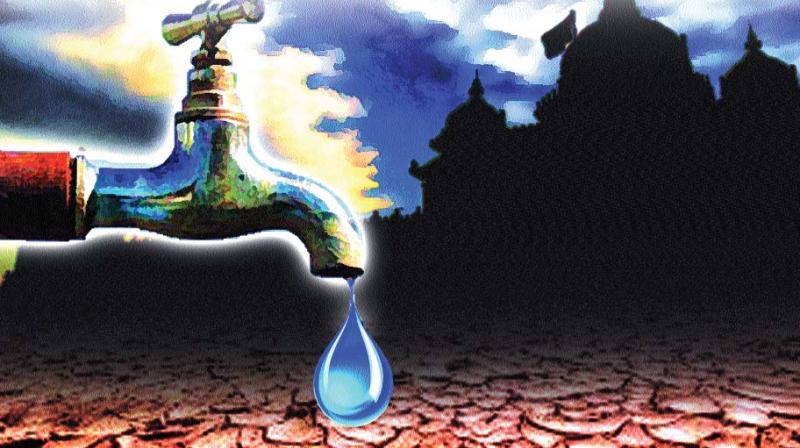Tap it in your backyard, don’t ‘dam’ our rivers!
The scientist points out that the Nethravati river too is drying up and doesn’t have as much water as it did in the past.

That Bengaluru is heading for a water shortage has been known for a while, but alarm bells went off recently when deputy Chief Minister, Dr G Parameshwar , spoke of a possible five- year ban on construction of apartments in the city to conserve water.
The proposal has set off quite a debate in the city with people wondering how imminent the water crisis is and others lauding the government for at least trying to be farsighted in its approach to the problem. While the ban is iffy at the moment, the government has been drawing criticism for doing little in practical terms to deal with the looming water shortage. Many find its present solutions literally far- fetched as they involve bringing water to the city over 400 kms from the river Sharavathi, and from Yettinahole, a tributary of the river Nethravathi that originates in the Western Ghats, to complement the Cauvery water supply that is currently its lifeline.
Some water experts believe the government is taking a circuitous route to address Bengaluru’s water shortage, when a much more practical and easier way out is staring it in the face. Rain water harvesting, they point out, is easy to do and a very good solution as Bengaluru , spread over 700 sq. kms, is blessed with rainfall of 700-800 mm per annum. “If this is harvested properly we can get 15 tmc of water per year, which nearly meets the city’s total requirement of 18 tmc. In addition, if we use recycled water, we can get another 16 tmc,” notes water expert and lead scientist at the Indian Institute of Science, Dr T V Ramachandra.
“People sitting in air-conditioned rooms come up with complicated projects only to milk money from them. Take Tamil Nadu. As part of the Telugu Ganga project, Chennai was supposed to get 12 tmc of water every year, but is it really getting it? No. The water levels have fallen in the Krishna to such an extent that Chennai is suffering for a pot of water,” he observes.
The scientist points out that the Nethravati river too is drying up and doesn’t have as much water as it did in the past. “We cannot be sure if the water promised can be extracted from the Sharavati and Yettinahole projects too. A Chennai- kind of situation might arise in Bengaluru if we don't wake up and harvest rain water and reuse water,” he warns, suggesting that the government focus on sustainable ideas rather than multi-crore projects. While there are some roof-top rain water harvesting systems in the city, Dr Ramachandra believes it may be more helpful if lakes are used to harvest it. “This will improve the groundwater table too,” he adds, in an obvious reference to the depths to which borewells have to be sunk today to reach water, making several homes already fully dependent on the Cauvery water. .
RWH structures mandatory but nobody’s listening: BWSSB
Bengaluru borrowed the idea of rain water harvesting from Chennai, which went down this road as early as 2003. Starting much later in 2011, the city is way behind in implementing it with the government failing to aggressively promote it.
It was in 2009 that a legislation was enacted to make installation of rain water harvesting structures mandatory in all new buildings measuring 1200 sq ft and 2,400 sq ft in the city. But the real action began in 2011. Today, of the nearly 1.85 lakh buildings that were identified (as in May this year) in the city under the new law, 1.20,lakh have installed rain water harvesting structures ,but the rest, 65,464 properties, have not bothered to install them and prefer to pay fines imposed instead.
The water board says it has collected over Rs 3 crore in penalty from the defaulters. “We have done all we can to make people fall in line. We have even started to levy a penalty and are gradually increasing it. But still, people are not interested in rain water harvesting,” regretted a BWSSB official, also recalling that the board’s plan of disconnecting the water supply of households, which did not install RWH ,did not get the government’s support.
Mr Vinod, a techie, whose apartment building has opted for rain water harvesting, suggests the board should go door –to- door to explain the benefits of conserving rain water and how it can bring down people’s water bills. “This will motivate more people to go in for RWH, ” he adds.

